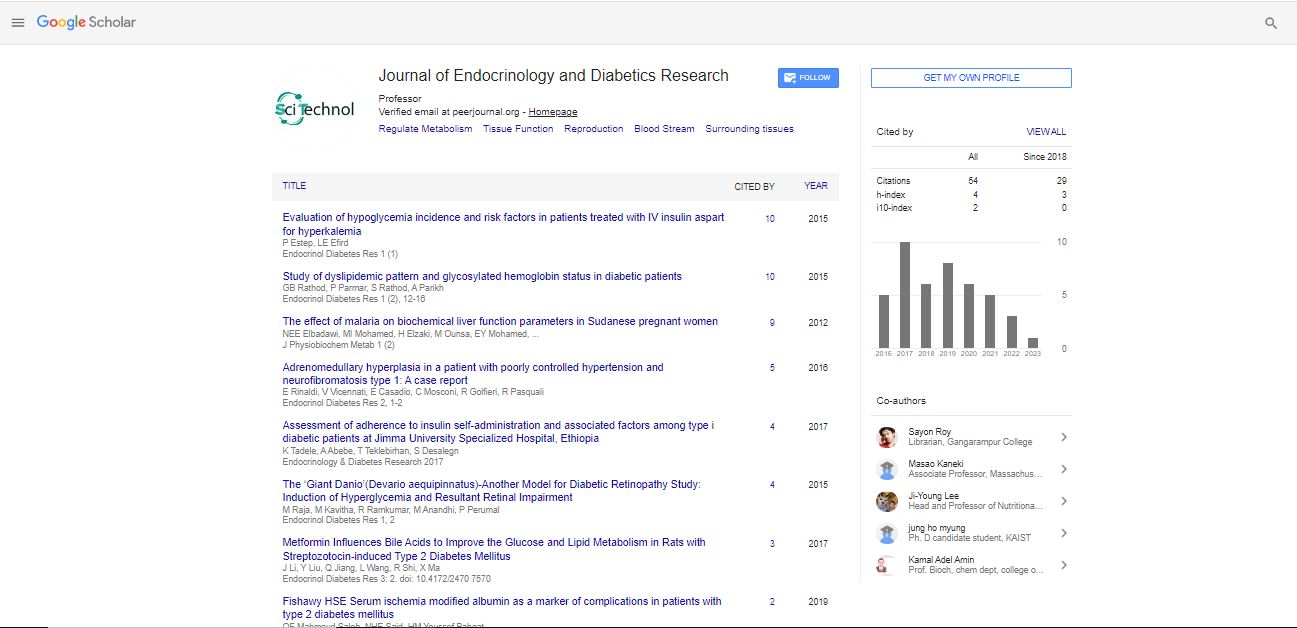Research Article, Endocrinol Diabetes Res Vol: 1 Issue: 1
Study of Dyslipidemic Pattern and Glycosylated Hemoglobin Status in Diabetic Patients
| Gunvanti B Rathod1*, Pragnesh Parmar2, Sangita Rathod3 and Ashish Parikh4 | |
| 1Department of Pathology, SBKS Medical Institute and Research Centre of PaediatricsThanjavur Vadodara, Gujarat, India | |
| 2Department of Forensic Medicine, SBKS Medical Institute and Research Centre Vadodara, Gujarat, India | |
| 3Department of Medicine, AMC MET Medical College, Sheth LG General Hospital. Ahmedabad, Gujarat, India | |
| 4Consultant Physician, Gayatri Hospital, Gandhinagar, Gujarat, India | |
| Corresponding author : Gunvanti B Rathod Department of Pathology, SBKS Medical Institute and Research Centre, Vadodara – 391760, Gujarat, India Tel: 8141905206 E-mail: m.neempath@gmail.com |
|
| Received: August 05, 2014 Accepted: November 24, 2014 Published: December 02, 2014 | |
| Citation: Rathod GB, Parmar P, Rathod S, Parikh A (2015) Study of Dyslipidemic Pattern and Glycosylated Hemoglobin Status in Diabetic Patients. Endocrinol Diabetes Res 1:1. doi:10.4172/2470-7570.1000101 | |
Abstract
Study of Dyslipidemic Pattern and Glycosylated Hemoglobin Status in Diabetic Patients
Background: Diabetes mellitus is a group of metabolic disease causes about 5% of all deaths globally each year. Majority of the diabetic patients also do suffer from dyslipidemia.
Aim and objectives: To study glycated hemoglobin levels (HbA1c) and serum lipid levels in diabetes patients and to compare glycated hemoglobin levels with their lipid levels in diabetes patients.
Material and methods: The present study was conducted at Gayatri Hospital, Gandhinagar, Gujarat between the periods of January 2011 to January 2012. It was an observational study in which total 60 diabetes patients of indoor as well as outdoor patient department were included.
Results: Out of 60 diabetic patients, 63.33% were male, 65% patients were dyslipidemic and 55% had poor glycemic control. Among poor glycemic control patients, 87.88% patients had dyslipidemia.
Conclusion: A significant correlation exist between HbA1C and lipid profile in diabetic patients. HbA1C can be used as an indicator of glycemic control as well as a biomarker of lipidemic state in diabetics.



